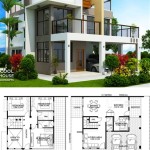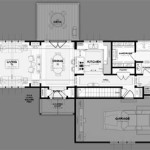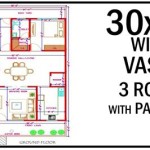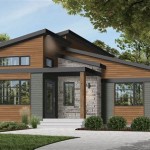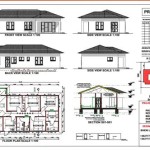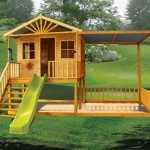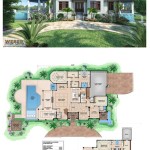Micro Housing Plans: Maximizing Space and Minimizing Footprint
Micro housing plans represent a significant shift in residential design, prioritizing efficient space utilization and a smaller environmental footprint. These plans offer a solution to rising housing costs and the increasing demand for urban living. By focusing on multi-functional spaces and clever storage solutions, micro housing units provide comfortable living in a condensed area.
The core principle of micro housing design is maximizing functionality within limited square footage. This often involves the incorporation of built-in furniture, such as fold-away beds, tables, and desks. Vertical space is also utilized strategically, with lofted sleeping areas, elevated storage, and high ceilings creating an illusion of spaciousness.
Several distinct types of micro housing plans cater to various needs and lifestyles. Studio apartments are a common form, offering a single open space encompassing living, sleeping, and kitchen areas. Tiny houses, often built on trailers for mobility, represent another popular option, providing independent living in a compact structure.
Modular micro housing plans are gaining traction due to their efficient construction process. These prefabricated units are built off-site and then assembled on location, reducing construction time and cost. This approach also allows for greater flexibility in design and customization, catering to individual needs and site-specific requirements.
When designing a micro housing plan, careful consideration of spatial organization is crucial. Open floor plans help create a sense of spaciousness, while strategically placed windows and skylights maximize natural light. Efficient storage solutions, such as built-in shelving, under-bed storage, and wall-mounted cabinets, are essential for maintaining a clutter-free environment.
The choice of materials and appliances significantly impacts the functionality and sustainability of micro housing. Durable, easy-to-clean materials are preferred for high-traffic areas. Energy-efficient appliances and fixtures contribute to lower operating costs and a smaller ecological footprint. Sustainable building materials, such as reclaimed wood and recycled materials, can further enhance the eco-friendliness of the dwelling.
Micro housing plans often incorporate innovative design features to enhance functionality and comfort. Multi-functional furniture, such as sofa beds and convertible tables, allows for flexible use of space. Smart home technology can optimize lighting, temperature control, and security systems, contributing to both convenience and energy efficiency.
The integration of outdoor space, even in small amounts, can significantly enhance the livability of micro housing units. Balconies, patios, and rooftop gardens provide opportunities for relaxation and connection with nature. Communal outdoor spaces in multi-unit micro housing developments foster a sense of community and shared living.
The legal and regulatory landscape surrounding micro housing varies considerably depending on location. Building codes and zoning regulations often dictate minimum dwelling sizes and occupancy limits. Understanding local regulations is crucial before embarking on a micro housing project. Some jurisdictions are actively adapting their regulations to accommodate the growing interest in micro housing as a sustainable and affordable housing solution.
Micro housing plans offer a range of benefits, including affordability, reduced environmental impact, and increased mobility. Lower construction and operating costs make micro housing an attractive option for individuals seeking affordable housing solutions. The smaller footprint of these dwellings translates to reduced energy and water consumption, contributing to a smaller environmental impact.
The design considerations for micro housing kitchens prioritize efficiency and functionality. Compact appliances, such as mini-refrigerators and combination microwave ovens, save space without compromising functionality. Clever storage solutions and efficient layouts maximize the use of limited counter space. Vertical storage and wall-mounted organizers keep essentials within easy reach.
Bathrooms in micro housing plans often incorporate space-saving fixtures and innovative design solutions. Compact showers, corner sinks, and wall-mounted toilets maximize floor space. Creative storage solutions, such as mirrored medicine cabinets and under-sink organizers, keep toiletries and personal items organized.
The growing popularity of micro housing reflects a shift in societal values towards minimalism and sustainable living. These compact dwellings offer a viable solution to the challenges of affordable housing, urban density, and environmental sustainability. By prioritizing functionality, efficiency, and innovative design, micro housing plans provide comfortable and sustainable living in a smaller footprint.
Accessibility is an important consideration in micro housing design. Incorporating features such as wider doorways, grab bars, and ramps ensures that the dwelling is accessible to individuals with mobility limitations. Universal design principles promote inclusivity and ensure that the space can accommodate a diverse range of residents.
Micro housing communities are emerging as an innovative approach to urban living. These developments often feature shared amenities, such as communal kitchens, laundry facilities, and co-working spaces. This shared living model fosters a sense of community and provides opportunities for social interaction. Shared resources also contribute to reduced overall resource consumption and a smaller environmental footprint.

R Micro Housing Simple Projects Architecture Archdaily

10 Micro Home Floor Plans Designed To Save Space

10 Micro Home Floor Plans Designed To Save Space

Micro Apartments Being Built Inside Indoor Mall Apartment Floor Plans Studio

10 Micro Home Floor Plans Designed To Save Space

New York To Complete First Prefabricated Micro Apartments This Year Archdaily

10 Micro Home Floor Plans Designed To Save Space

What Are Micro Apartments

How Seattle Killed Micro Housing Sightline Institute

Nyc Announces Micro Apartment Design Comp Winner Core77

